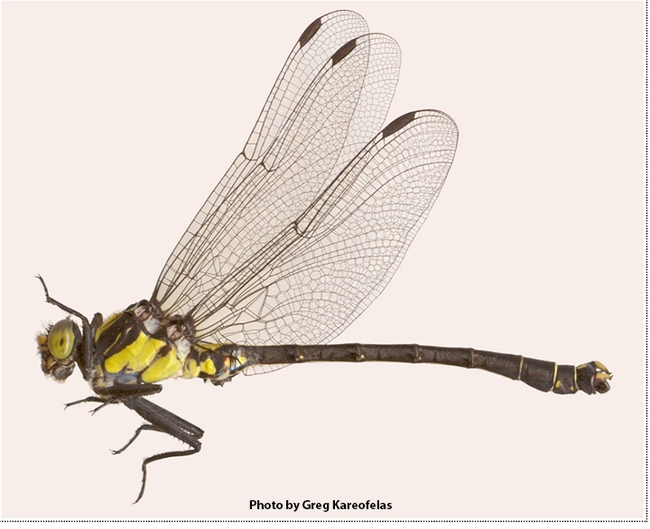- Author: Kathy Keatley Garvey

It belongs to the genus Octogomphus, which has one species, O. specularis. The dragonfly derives its common name from the club-like widening at the end of its abdomen.
UC Davis dragonfly experts Christofer Brothers, a doctoral candidate, and naturalist Greg Kareofelas of the Bohart Museum of Entomology, UC Davis Department of Entomology and Nematology, recently discussed the grappeltail dragonfly on "Critter Chat," a radio broadcast/podcast program that airs the first Wednesday of every month from 6:30 to 7 p.m. on KVMR.
KVMR broadcasts in Northern California and online at KVMR.org

Listen to the dragonfly episode here.
In the monthly podcasts, hosts Susan Brandt and Marney Blair talk with experts about "the amazing wild critters that live in the Sierra Nevada mountains and foothills." All the episodes are listed at https://rational-animal.org/critter-chat. Their topics have ranged from acorn woodpeckers, Sierra newts, and the Western bumble bee to coyotes, Sierra Nevada bighorn sheep and pallid bats.
The hosts are llfelong friends who met in kindergarten and are now neighbors in Grass Valley.
Blair is a self-described "biologist and farmer...and a leader in biodynamic composting and blind farming....and a member of various writing and poetry groups." Blair holds a bachelor's degree in biology and a master's degree in psychology from UC San Diego.
Brandt is a communication specialist, grassroots organizer and founder of Rational Animal. She produces and hosts multimedia projects and special events. Brandt completed her undergraduate education at UC Santa Cruz and received her master's degree in international communication and development from Ohio University.
Meet the UC Davis dragonfly experts!

At a recent Bohart Museum open house, Brothers described dragonflies as "incredibly successful predators. The adults catch prey up to 97 percent of the time...Adult dragonflies specialize in flying prey and utilize both predator strategies: sit-and-wait, and active."
"Dragonflies have nearly 360-degree vision, and are extra sensitive to small wavelengths," he told the open house crowd. Scientists say that dragonflies (and bees) have the largest compound eyes of any insect, with each containing up to 30,000 facets. The eyes cover most of a dragonfly's head; the eyes resemble a motorcycle helmet.
Greg Kareofelas. Kareofelas is a Bohart Museum associate engaged in outreach activities and educational programs. He's a fixture at the Bohart open houses, where he and Lepidoptera collection curator Jeff Smith show and discuss the specimens. Kareofelasis is an authority on the California state insect, the California dogface butterfly, Zerene eurydice, and a docent for the Placer Land Trust's dogface butterfly habitat, the 40-acre Shutamul Bear River Preserve near Auburn, Placer County. Kareofelas discussed the dogface for a 2021 PBS program, "Rob on the Road."
Kareofelas captures amazing images of insects, many that he rears. His images of the dogface butterfly appear in the children's book, The Story of the Dogface Butterfly, authored by Fran Keller, now a Folsom Lake College professor. His dragonfly and butterfly images are also featured on posters available in the Bohart Museum gift shop.
The Bohart Museum, located in Room 1124 of the Academic Surge Building, 455 Crocker Lane, UC Davis, is the home of a global collection of eight million insect specimens. In addition to the gift shop, it houses a live petting zoo. Director is Professor Jason Bond, the Evert and Marion Schlinger Endowed Chair, UC Davis Department of Entomology and Nematology, and associate dean, UC Davis College of Agricultural and Environmental Sciences.



